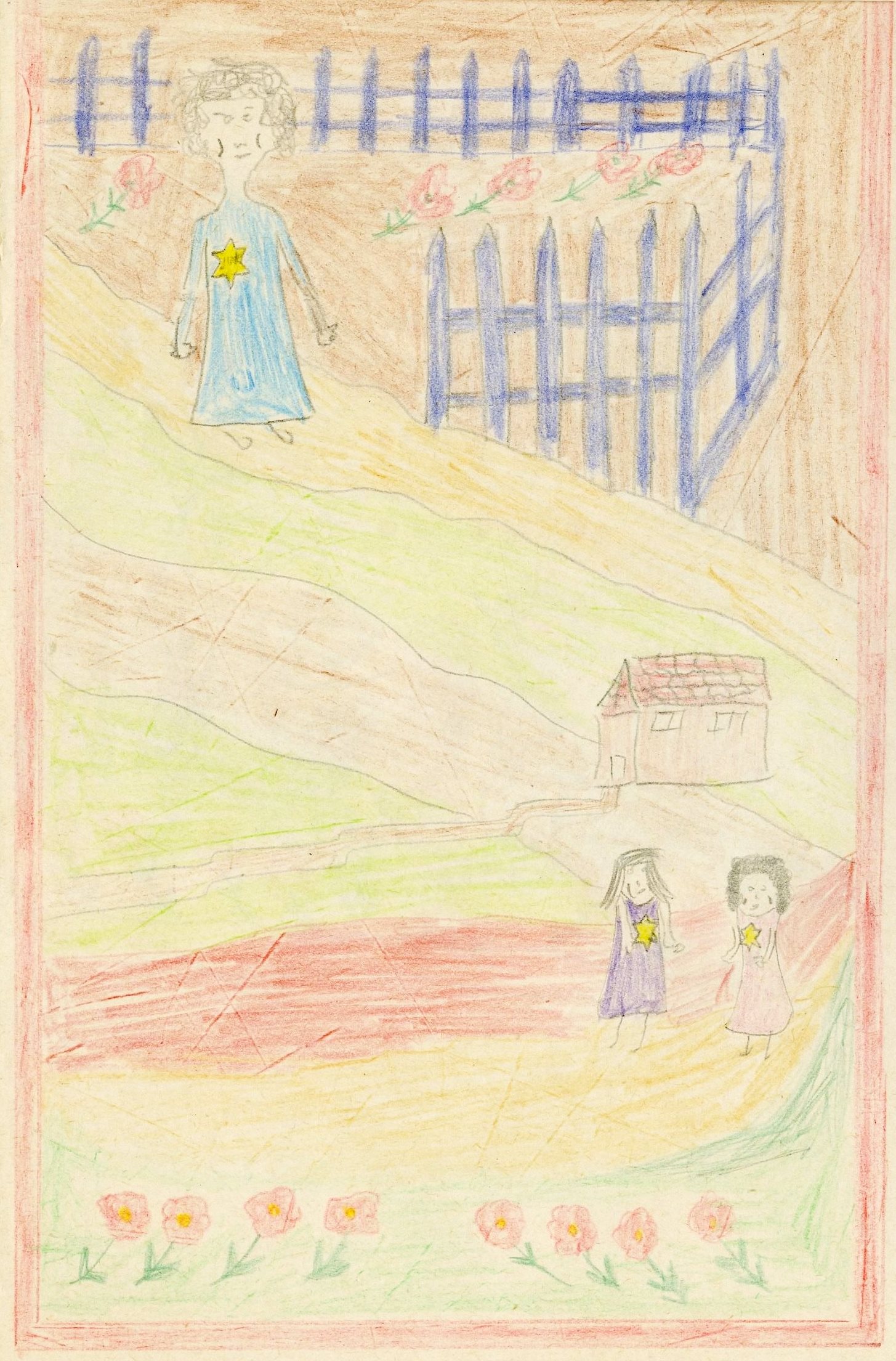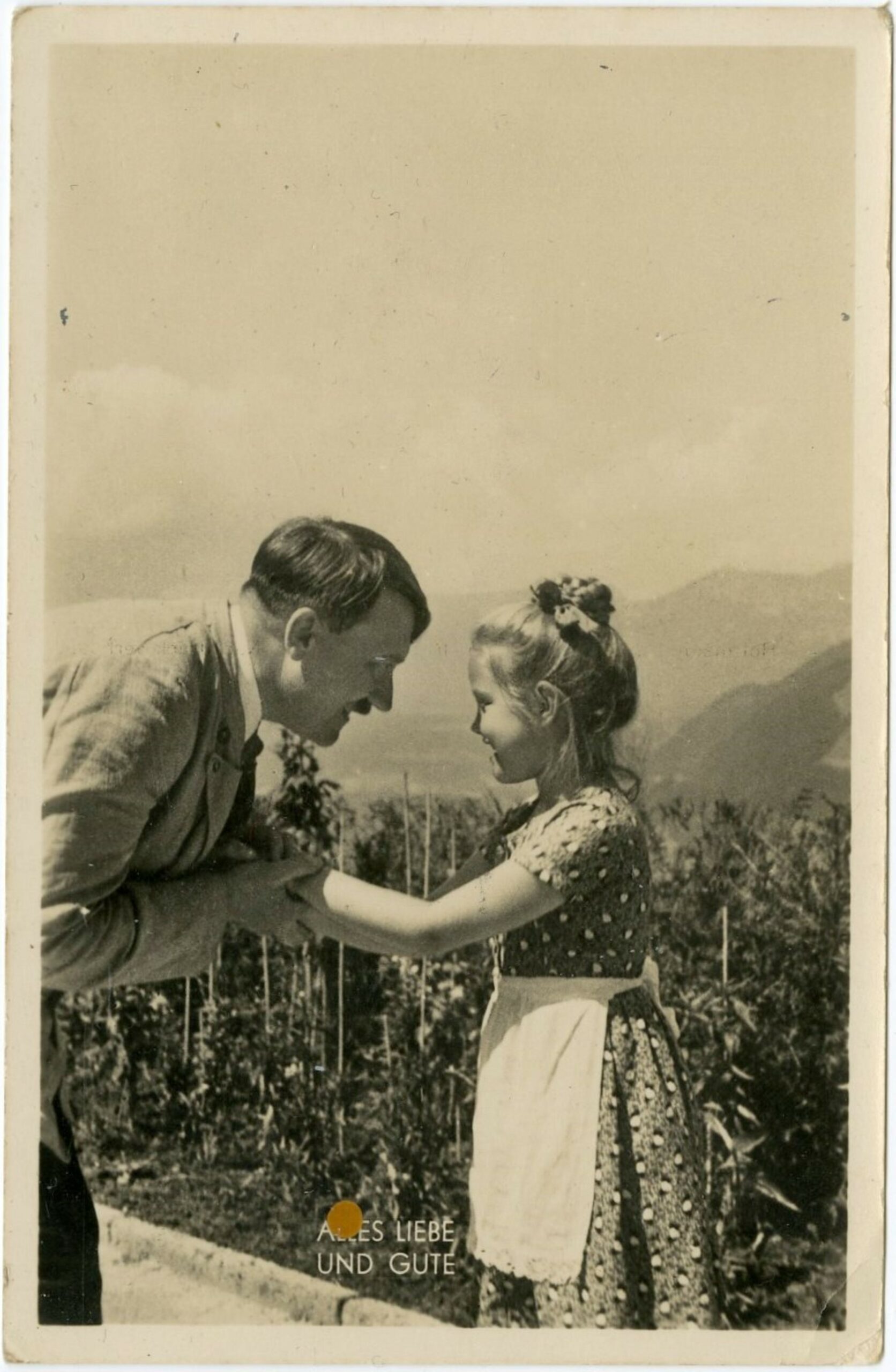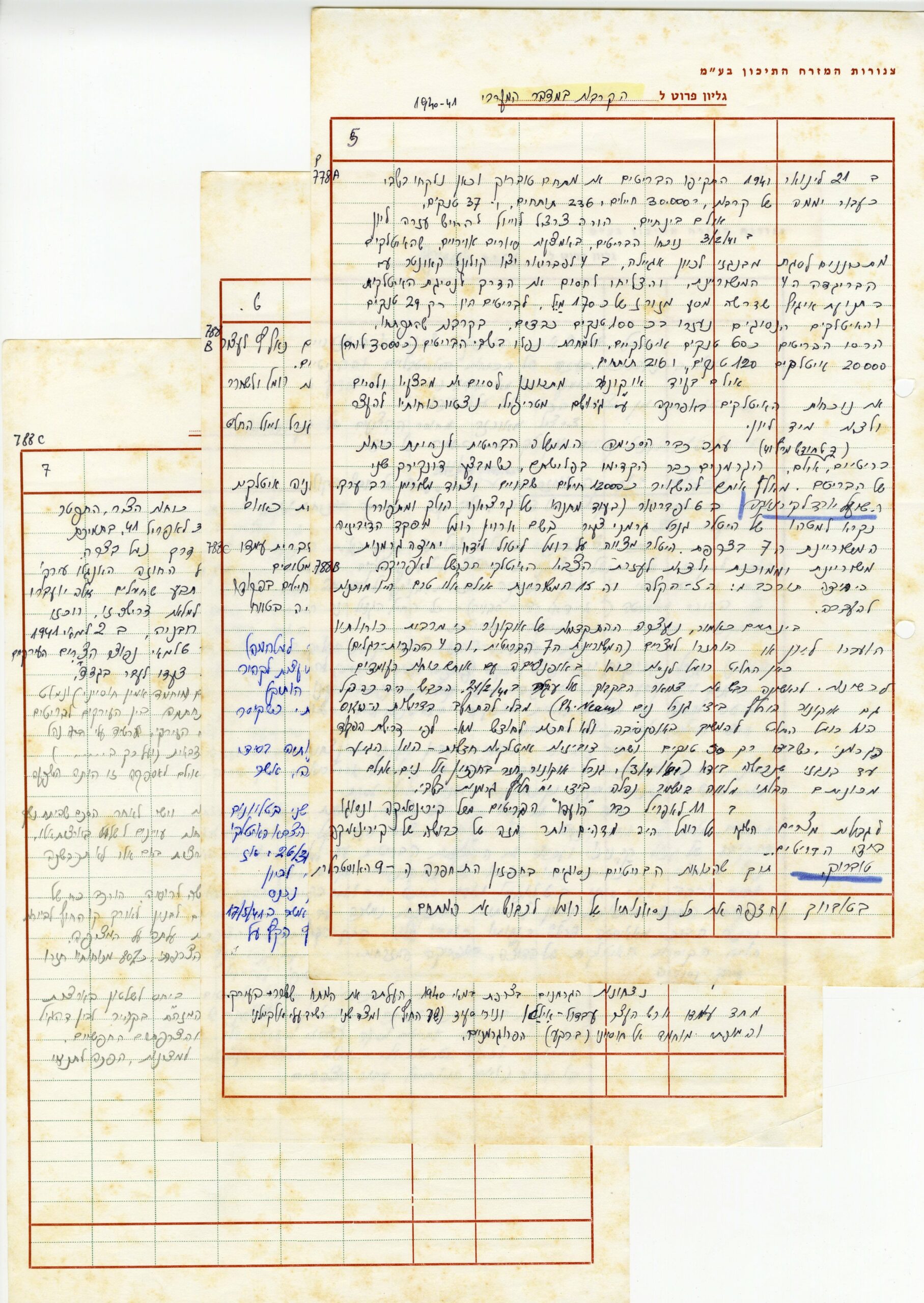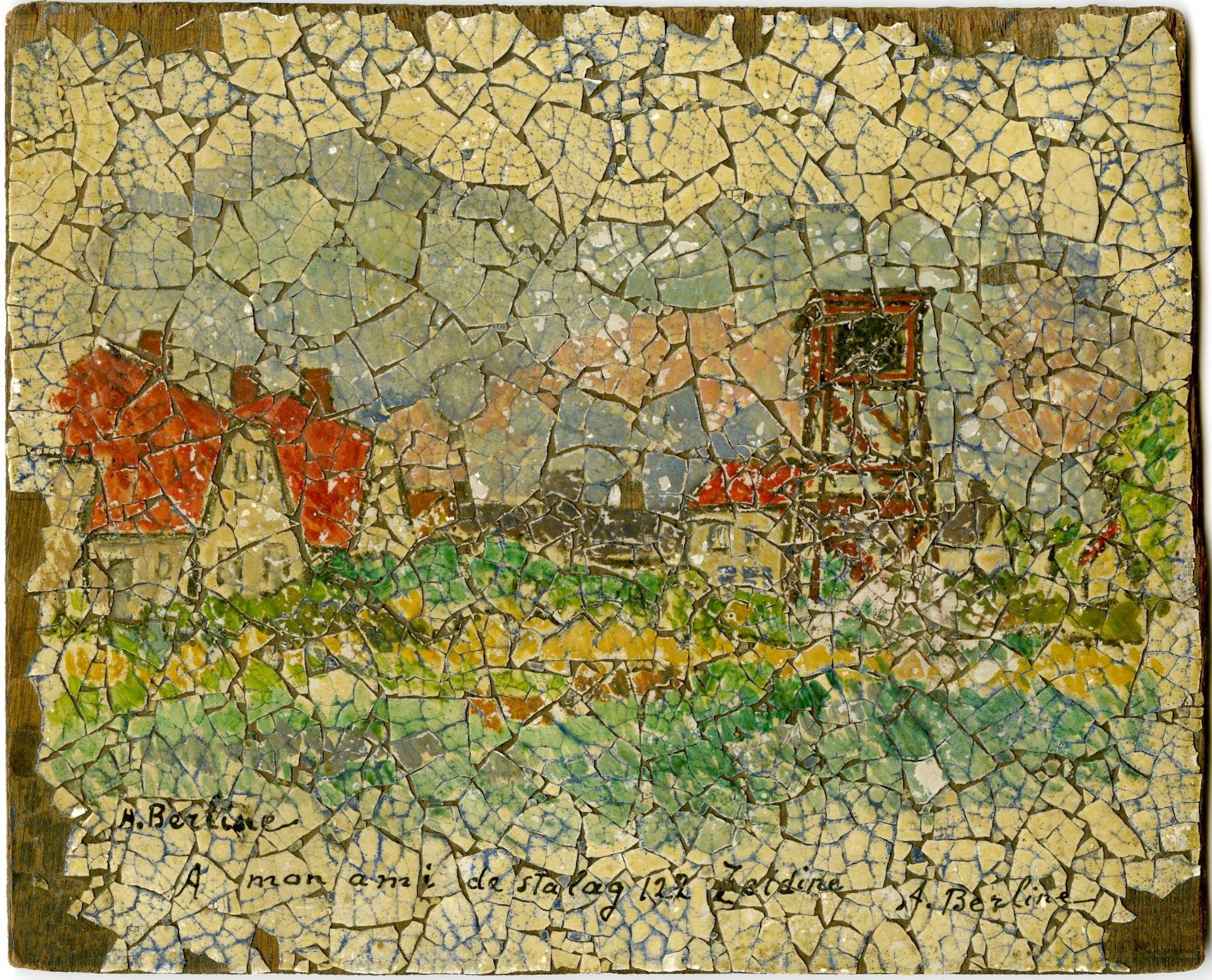One of the most interesting and rare relics from the death camps, which were received at the auction house, is a painting of a landscape of the Compain concentration camp made by the prisoner Avraham Berlin while he was a prison in the camp.
Abraham - Joseph Berlin was born on October 5, 1894 in the town of Nezhin, Ukraine. In 1912, at the age of 18, he emigrated to Paris to study at the "School of Fine Arts", and soon became famous among art lovers in France, and his works were displayed in important galleries. In May 1941, he was arrested for being a Jew of Russian descent and imprisoned in the Compiegne camp. Berlin was held as a prisoner in the camp for seven months in harsh conditions. Despite his difficult physical condition, and the fear of being caught by the Nazis for his act, Berlin decided to visually document the view of the camp. Due to a lack of art supplies inside the camp area, he used eggshells, from the meager food scraps that the Jews received in the camp .He cut the eggshells into tiny pieces precisely, glued them to a wooden board, and from them he created the pattern of the camp - the guard tower, and the blocks. The eggshells he colored in shades of brown, green, yellow, blue and red. Apparently, due to the severe Nazi ban on documenting the camp, Berlin wrote "A mon ami" - in French 'my friend', or 'friend', referring to the camp, allegedly painting his house. After seven months in the camp, he was transferred to the Drancy camp, and in 1942 was deported to the Auschwitz camp, where he was murdered.
Berlin, was held in Campagne for seven months, and perished in Auschwitz a few months later. Holocaust survivor historian Eugen Kogon described the deportees who came from Compiegne to Buchenwald: "Can hardly describe the situation in which these people came. In the summer of 1943, hundreds of Frenchmen were loaded from the station in Weimar along with their dead. They were transported in cattle wagons from Compiègne and were dressed in underwear or were naked. Then they marched together to Buchenwald...".
It is known about four other works by Avraham Berlin that he created inside the Compiegne camp, which are in the Ghetto Fighters' House archives (Record No. 1694 - 1690), which were submitted by the painter Isis - Israel Kischka, who was also an inmate of the camp, all of them Made in pastel colors on paper. It is not known about other works he created in the camp in this technique, of sticking eggshells on a piece of wood.
The Compiègne concentration camp, [known by the Nazis as "Front-Stalag 122"], was one of the largest concentration and transit camps in France near the city of Compiègne, 75 kilometers north of Paris, where some 54,000 people were imprisoned during World War II from June 1941 to August 1944. , Among them: political prisoners, communists and Jews. About 45,000 inmates were deported from the camp to the Auschwitz extermination camp and to other concentration and extermination camps. At the outbreak of World War II in 1939, the French set up a military hospital in several old white barracks in the city of Compiegne. A year later, when France was occupied by Germany, the Germans turned the facility into a POW camp. The Gestapo then took control of the camp and in June 1941 turned it into the Front-Stalag 122, a permanent concentration camp for "hostile regime" prisoners. Beginning in February 1942, an official order designated a place for Jews in the camp "for deportation purposes" and "hostages for the future implementation of retaliatory measures." The Jews were concentrated in part of the camp and separated from the French and Russians who had previously stayed there, by barbed wire fences.
The first deportation of Jews and political prisoners from France to the Nazi concentration camps came from the Compiegne camp. On Friday, March 27, 1942, the first train with 1,120 Jews deported to Auschwitz left it. Between 1942 and 1944, twenty-six small shipments departed and another 12 large ones. Over 45,000 people - resistance fighters, Jews, trade unionists and others - were sent from the Compiegne camp to concentration and extermination camps in Nazi Germany.
see dynasty auction no. 9, item 33.







